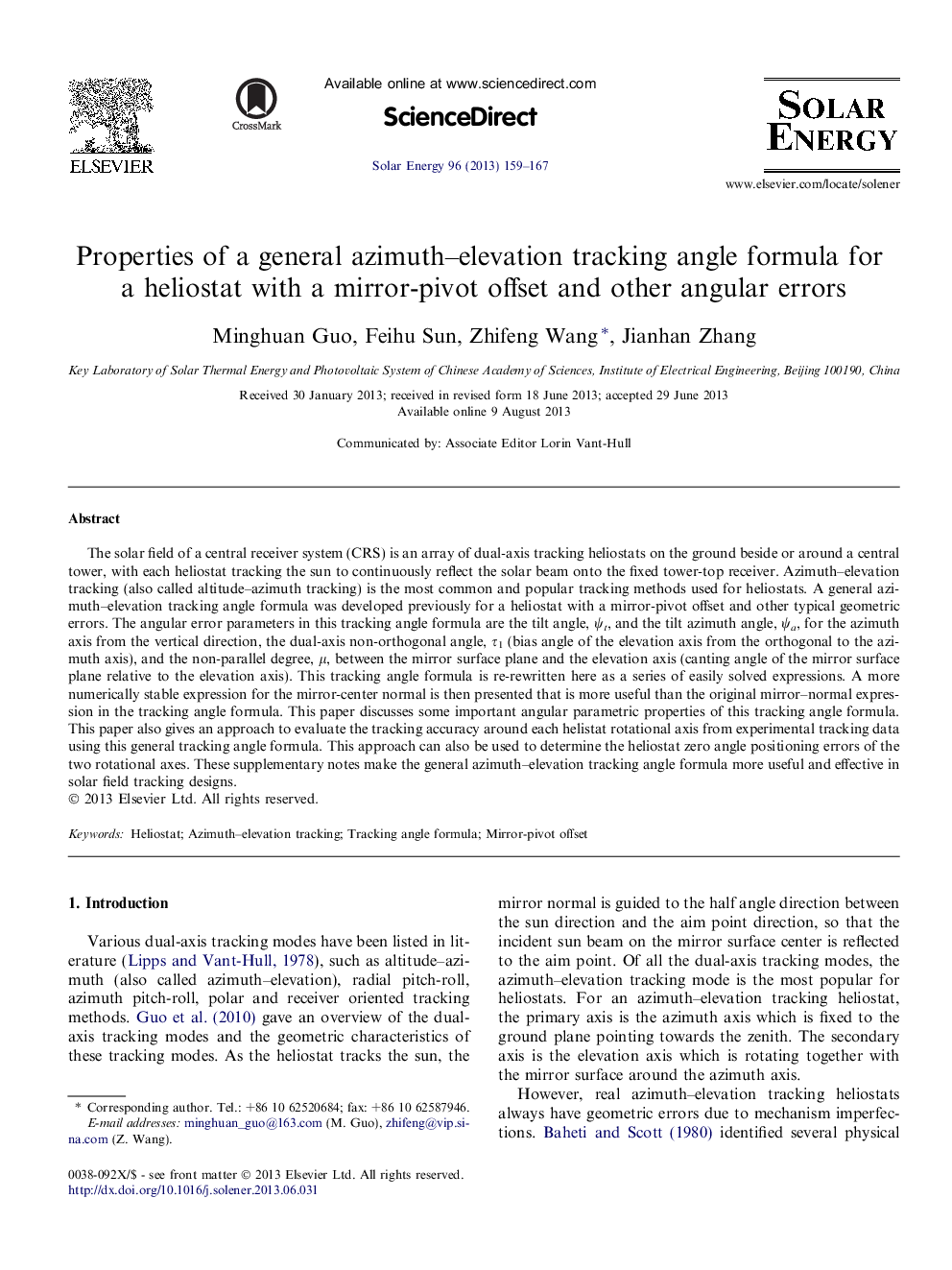| Article ID | Journal | Published Year | Pages | File Type |
|---|---|---|---|---|
| 1550492 | Solar Energy | 2013 | 9 Pages |
•The general tracking formula for an azimuth–elevation heliostat is re-rewritten.•Important angular parametric properties of this tracking angle formula are given.•A more numerically stable expression for the mirror normal vector is given here.•Expressions relating an elevation tracking angle to the screw actuator are given.•An approach to evaluate each heliostat axis precision from measured data is given.
The solar field of a central receiver system (CRS) is an array of dual-axis tracking heliostats on the ground beside or around a central tower, with each heliostat tracking the sun to continuously reflect the solar beam onto the fixed tower-top receiver. Azimuth–elevation tracking (also called altitude–azimuth tracking) is the most common and popular tracking methods used for heliostats. A general azimuth–elevation tracking angle formula was developed previously for a heliostat with a mirror-pivot offset and other typical geometric errors. The angular error parameters in this tracking angle formula are the tilt angle, ψt, and the tilt azimuth angle, ψa, for the azimuth axis from the vertical direction, the dual-axis non-orthogonal angle, τ1 (bias angle of the elevation axis from the orthogonal to the azimuth axis), and the non-parallel degree, μ, between the mirror surface plane and the elevation axis (canting angle of the mirror surface plane relative to the elevation axis). This tracking angle formula is re-rewritten here as a series of easily solved expressions. A more numerically stable expression for the mirror-center normal is then presented that is more useful than the original mirror–normal expression in the tracking angle formula. This paper discusses some important angular parametric properties of this tracking angle formula. This paper also gives an approach to evaluate the tracking accuracy around each helistat rotational axis from experimental tracking data using this general tracking angle formula. This approach can also be used to determine the heliostat zero angle positioning errors of the two rotational axes. These supplementary notes make the general azimuth–elevation tracking angle formula more useful and effective in solar field tracking designs.
Graphical abstractFigure optionsDownload full-size imageDownload as PowerPoint slide
